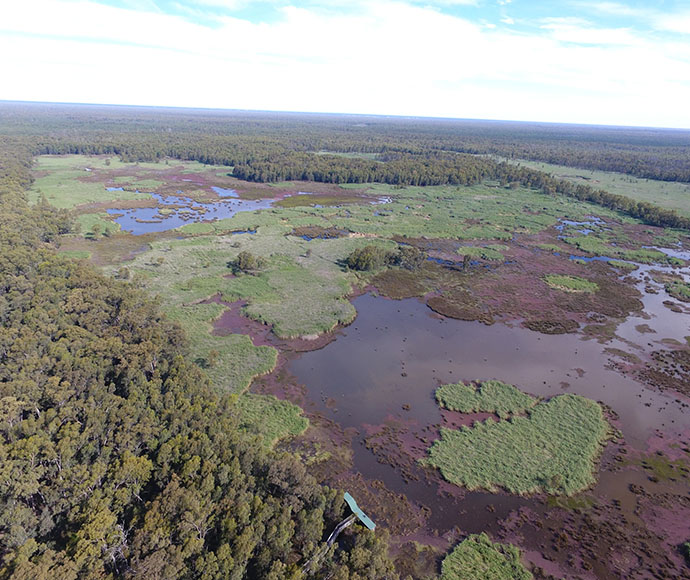The NSW Central Murray Forests Ramsar site is near Deniliquin in south-western New South Wales.
It covers 83,992 hectares and consists of 3 subsites: Millewa Forests, Werai Forests and Koondrook Forests. All 3 depend on flows in the Murray River.

NSW Central Murray Forests became a Ramsar site in 2003.
Why these wetlands were listed as a Ramsar site
Countries that sign up to the Ramsar Convention can nominate sites to be listed as Wetlands of International Importance (Ramsar sites). The site must meet at least one of 9 internationally accepted criteria.
NSW Central Murray Forests were listed as a Ramsar site in 2003 because they meet the following criteria.
Criterion 1: Representative or unique wetlands
Millewa Forests, together with Barmah Forest in Victoria, are Australia’s largest area of river red gum forest. They have trees more than 200 years old and areas that are structurally equivalent to undisturbed forest. This is despite the fact that parts of the forests have been harvested for timber for 150 years.
The Ramsar site also has other wetland types such as floodplain lakes, moira grass plains, meadows and reed swamps.
Criterion 2: Threatened species or ecological communities
The Ramsar site supports 8 nationally or internationally listed threatened species. These include:
- Australasian bittern
- Australian painted snipe
- superb parrot
- floating swamp wallaby grass
- trout cod
- silver perch
- Murray cod.
Criterion 4: Supports species at a critical stage of their life cycle or provides refuge in adverse conditions
The Ramsar site provides habitat for 11 species of migratory birds listed under international agreements. It supports breeding of thousands of colonial nesting waterbirds during times of inundation. It is also important for breeding of native fish and ducks.
The permanent rivers and wetlands within the site are recognised as drought refuge for native fauna in this semi-arid region.
Criterion 8: Food source, nursery or migration path for fish
The Ramsar site provides migratory routes between habitats in the Murray River, its anabranches (sections that branch off from the river and later rejoin it) and floodplains. Native fish move into off-stream areas on rising flows and seek refuge in deeper waters during low flow periods. Many species spawn on the floodplains.
How the site is managed
Management of this Ramsar site is guided by the following:
- the site’s Ramsar information sheet
- its ecological character description
- a statement of interim management intent (SIMI) that guides the management of Millewa and Werai Forests
- the Forestry Corporation of NSW’s ecologically sustainable Forest Management Plans
- the Ramsar Convention’s ‘wise use’ principles, which guide management of the Koondrook Forests.
In addition, the Werai Forests were vested in the Minister for the Environment on 1 July 2010 and will be transferred to traditional owners for conservation purposes.
Threats to the Ramsar site
The main threats to this site’s ecological character include:
- altered water regimes
- altered fire regimes
- introduced species, particularly European carp which competes with native fish
- climate change.
Changes in the water regimes have caused a reduction in the frequency and length of spring wetland inundation in all 3 forests and an alteration to the seasonality of inundation in Millewa Forests. The Department of Climate Change, Energy, the Environment and Water is working with the Australian Government to improve water regimes in these forests.